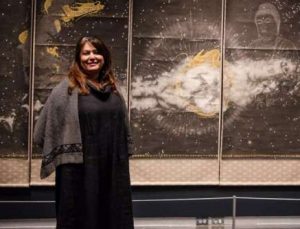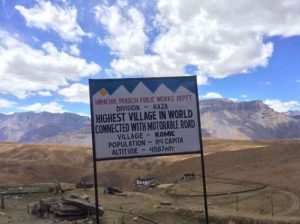
“The cloud is not lost; it is transformed into rain, and the rain is transformed into grass . . . ”
“I am a continuation like the rain is the continuation of the cloud.”
No Death, No Fear — Thích Nhất Hạnh
In 2007, I had the precious opportunity to join a retreat led by Thích Nhất Hạnh and the Plum Village Saṅgha in Hong Kong. As a Buddhist from a traditional Chan lineage, I have always struggled to identify skillful means to introduce precious Buddhist teachings to the younger generation. Young people who grow up surrounded by Western religious values and cultures may consider Buddhist rituals that are filled with complicated language and opera-style chanting to be slightly old fashioned, rigid, and unscientific, not to mention the apparently strict disciplines and myths that accompany them. Yet during the retreat, I was inspired by the insightful ways that Thầy—the Vietnamese word for “teacher”—introduced the Buddhist teachings.
Teaching “as it is”
Thầy had an amazing ability to introduce the Dharma to students of different backgrounds. He rarely used complicated theories or nomenclature; rather he used plain language and told lively stories with profound meanings. In spiritual reflections and academic studies, I often seek guidance from his teachings on complicated Buddhist concepts. His explanations are suitable for people at the beginning, intermediate, and advanced stages of their practice. Thầy offered neither a watered-down version nor a PhD version. His presentations of Buddhist teachings were “as it is”—true, accurate, and precise. Thầy maintained the simplicity of early Buddhist teachings combined with the great aspiration and compassionate engagement of the Mahāyāna tradition.
Traditional values with modern presentation
Thầy believed that the Buddhist teaching is about “entering into life, social life” as an “engaged Buddhist.” He and the Plum Village monastics skillfully present the Dharma’s rich traditional values with a modern style of presentation. Traditional values here refer to the core teachings of the Buddha, the triple gem of the Buddha, the Dharma, and the Saṅgha, the essence of selflessness, well-being, and interbeing, as well as a holistic vision of human development and cosmology. Thầy interpreted the teachings of the Buddha with a modern perspective, reflecting the needs and contexts of contemporary societies, and making traditional Buddhist values relevant to contemporary life. This miraculous balance of new and old, past and present, East and West was only possible because Thầy fully understood the meaning of the Buddhist texts and respected the context of human conditions beyond time and space. It could only be achieved because Thầy was truly selfless, possessing a profound compassion and wisdom.
Plum Village maintains the tradition of reciting the Heart Sutra and the name of the bodhisattva Avalokiteśvara, but with the accompaniment of violin, cello, and guitar, together with traditional bells and singing bowls. Many refreshing Plum Village songs have been written with profoundly meaningful lyrics. The practice of Touching the Earth presents the traditional practice of bowing to the Buddha as touching the Earth, reconnecting each of us with Mother Nature, embracing our blood ancestors, spiritual ancestors, and land ancestors. With the bowing, the practices of respect, humility, and connectedness are preserved intact.
Observance of the Vinaya (moral discipline) was taught by Thầy in the Five Mindfulness Trainings, based on the five precepts, and the Fourteen Mindfulness Trainings, which are based on the bodhisattva precepts. These mindfulness trainings have been modified by Thầy to better respond to our modern challenges. For example, the ancient precept of “no alcohol” or “no intoxicants” is reframed in the Five Mindfulness Trainings to “Nourishment and Healing”—that we should be aware of the suffering caused by unmindful consumption. “I am determined not to gamble, or to use alcohol, drugs, or any other products which contain toxins, such as certain websites, electronic games, TV programs, films, magazines, books, and conversations.” (Plum Village, 2018a)
The training is not only updated to go beyond alcohol, but all intoxications in the contemporary world that contaminate our body and consciousness, as well as the collective body and consciousness of our family, our society, and the Earth. The trainings also emphasize a deep reflection and awareness. And it is based on a solid foundation of awareness that we are determined to do what is right for ourselves, society, and the environment.
Another example is the Buddhist refuge in the Buddha, the Dharma, and the Saṅgha. Thầy taught us the true meaning of taking refuge:
To take refuge, first of all, is to take refuge in the island of ourselves and then in the island of a Sangha. These islands are communities of resistance. “Resistance” does not mean to oppose others. It means to protect ourselves, like staying inside the house to protect ourselves from the weather. We resist being destroyed by society’s pollution, noise, unhappiness, harsh words, and negative behavior.
(Thích Nhất Hạnh, 1993)
I have been reflecting on the meaning of moral disciplines and how they are better explained as protection rather than “restriction” or “prohibition.” They are protection because they are not meant to be imposed on others. Instead, they are like safe harbors that protect us against external disturbances, challenges, and temptations. Perhaps they are comparable to a breakwater, which protects the shore from the ocean’s fierce waves and keeps us grounded. Without it, we would be swept along by the waves and currents of worldly pursuits.
Saṅgha as a community of compassion and wisdom
While the greatness of many spiritual leaders can be measured in the size of their global communities, Thầy’s unique contribution to contemporary Buddhism was the revitalization of the saṅgha in both size and solidarity. This is particularly important in this world of individualistic ideals and self-centeredness, which affects both lay and monastic communities. Indeed, it is not uncommon for some spiritual leaders or their followers to feel the need to go-it-alone, not realizing the significant contributions of their spiritual ancestors and peers. The saṅgha of Plum Village comprises lay and monastic members from all over the world, across different nationalities and age groups. Thầy truly believed in the strength of internal reflection for humans and in working together as a community:
If we do not know how to take care of ourselves, we may get wounded and be unable to help others. If we join with others to build a sangha that can nourish and protect us and resist society’s destructiveness, we will be able to return home.
(Thích Nhất Hạnh, 1993)
Thầy was convinced that we could “wake up together” as a spiritual family:
With the support of the collective we can recognize, embrace and transform whatever is coming up inside us, so we can see clearly what to do and what not to do to help the situation.
(Plum Village, 2018b)

People from different backgrounds may require different styles of presentation or different channels of delivery, but the essence should be the same. Thầy made his teachings available to all. Although he presented the teachings of the Buddha in different ways, the essential Buddhist teachings have always been consistent. It was therefore particularly touching and inspiring when, in 2018, Thầy decided to return to Vietnam for the final part of his life journey to pay respect to his birthplace and roots. In paying tribute to his own teachers and lineage at his root temple in Huế, Thầy showed that he fully appreciated all conditions in the past, present, and future that made his learning and teaching possible. This is the real understanding and manifestation of interbeing, seeing beyond the artificial barriers and obstacles constructed by humans.
Thầy has suggested that “we need a real awakening, enlightenment, to change our way of thinking and seeing things.” (Confino, 2012) This real awakening is to transcend polarized mindsets and silo mentalities. It is only possible to deliver change when we transcend these polarized views and see the divided as one and the same. As he once proclaimed: “There is no religion, no doctrine higher than brotherhood and sisterhood.” (Plum Village, 2018c)
The practice of hope and change
Thầy was a true bodhisattva; compassionate and wise. No matter how much oppression and danger he personally experienced, he never cast doubt upon our ability to change and transform. No matter how challenging and difficult human conditions are, he was hopeful for a better world because he had strong confidence in the transformability of the human mind.
The “real enemy of mankind,” if any, is our anger, hatred and discrimination. (Thầy 2018) Thầy was confident in the teachings of the Buddha, the Dharma, and proclaimed that all we are missing are the collective actions to internalize the change we want to see in this world and to project them outward. The missing links are “concrete ways of making our commitment to sustainable living a reality in our daily lives. We haven’t organized ourselves.” (Thích 2010) Instead of blaming governments and corporations, urgent action must be taken at both the individual and collective level:
It’s time for each of us to wake up and take action in our own lives. We have the power to decide the destiny of our planet. If we awaken to our true situation, there will be a change in our collective consciousness. We have to do something to wake people up.
(Thích Nhất Hạnh 2010)
Thầy remained hopeful that we could create a spirituality and an ethic that could unite us, removing all separation and discrimination. He called this a “cosmic religion,” one not based on myth, belief, or dogma, but on evidence and the insight of non-duality of interbeing. (Thầy 2018) Thầy achieved amazing results with a global community of over 1,500 local saṅghas. Wherever the saṅghas and whomever their members, they share the same system of mindfulness trainings and follow the same spiritual practices of compassion and wisdom.
I have arrived. I am home

Over the past few years, while residing in Huế, Thầy shared precious teachings on aging and letting go. He knew that we would miss him dearly but we must also continue to learn, organize, and practice together as a saṅgha. In his world-renowned book No Death, No Fear (Riverhead Books 2003), Thầy taught us how to see beyond the idea of death and realize that there is no dying, “there is only continuation.” He suggested:
When you lose a loved one, you suffer. But if you know how to look deeply, you have a chance to realize that his or her nature is truly the nature of no birth, no death. There is manifestation and there is the manifestation in order to have another manifestation. You have to be very keen and very alert to realize the new manifestation of just one person. But with the practice and with effort you can do it.
So, taking the hand of someone who knows the practice, together do walking meditation. Pay attention to all the leaves, the flowers, the birds and dewdrops. If you can stop and look deeply, you will be able to recognize your beloved one manifesting again and again in many forms. You will again embrace the joy of life.
(Thích Nhất Hạnh 2003, 194)
In times to come, if we look deeply, we will see Thầy as a young monk in Vietnam at the age of 16, as a peace activist in Vietnam and in Europe, as a teacher, as a devout Buddhist, as a leader of the Saṅgha. If we look deeply, we will see Thầy in his books, songs, poems, and calligraphy. We will see in Thầy the same compassionate heart of the young monk who was forced into exile decades ago and the monk who finally returned home to his root temple, Từ Hiếu.
We will each see Thầy in our minds and hearts and in our daily practice. If we look deeply, we will see Thầy being with us in the here and now. As Brother Phap Dung offered, paraphrasing Thầy’s message: “If I am anywhere, it is in your mindful breathing and in your peaceful steps.”
Dr. Ng received the Three Jewels and the Five Mindfulness Trainings from Thầy in Hong Kong in 2007 and received the Dharma name Kind Action of the Heart (心利行). He would like to dedicate this article to Thầy and to the Saṅgha of Plum Village.
References
Confino, Jo. 2012. “Beyond environment: Falling Back in Love with Mother Earth”. The Guardian. 20 February 2012. https://www.theguardian.com/sustainable-business/zen-thich-naht-hanh-buddhidm-business-values
———. 2014. “Thich Nhat Hanh: Is Mindfulness Being Corrupted by Business and Finance?” The Guardian. 28 March 2014. https://www.theguardian.com/sustainable-business/thich-nhat-hanh-mindfulness-google-tech
Thầy, Pháp Ấn. 2018. “From war, to peace, to the cosmos.” European Institute of Applied Buddhism. August 2018: 2-27.
Thích Nhất Hạnh. 1993. “Dharma Talk: Finding Our True Heritage.” Mindfulness Bell. 1993 (9). https://www.mindfulnessbell.org/archive/2016/02/dharma-talk-finding-our-true-heritage-2
———. 2003. No Death, No Fear. New York: Riverhead Books.
———. 2010. “The Bells of Mindfulness.” In Moral Ground: Ethical Action for a Planet in Peril. Edited by Kathleen D. Moore and Michael P. Nelson. pp 79–81. Texas: Trinity University Press.
Plum Village. 2018a. “The Five Mindfulness Trainings” . Plum Village. https://plumvillage.org/mindfulness-practice/the-5-mindfulness-trainings/
———. 2018b. “Where is Thay? A Christmas message from Plum Village.” Plum Village. 23 December 2018. https://plumvillage.org/articles/news/thay-updates/where-is-thay-a-christmas-message-from-plum-village/
———. 2018c. “Thich Nhat Hanh Returns Home”. Plum Village. 2 November 2018.
https://plumvillage.org/about/thich-nhat-hanh/thich-nhat-hanhs-health/thich-nhat-hanh-returns-to-vietnam/
———. 2019. “Thich Nhat Hanh’s final mindfulness lesson: how to die peacefully”. Plum Village. 11 November 2019. https://plumvillage.org/articles/thich-nhat-hanhs-final-mindfulness-lesson-how-to-die-peacefully/
Related features from BDG
Robert H. N. Ho Family Foundation Scholar Ven. Thich Tam Tien Brings the Dharma to Harvard Divinity School
Seeing Our Errors in the Mirror
Wait: A Love Letter to Those in Despair – An Interview with Buddhist Teacher and Author Cuong Lu
Cultivating Peace: Buddhist-Inspired Approaches to Conflict Resolution
Toward a Beloved Community












[…] The Cloud Is Not Lost – In Honor of Thích Nhất Hạnh […]
I’ve been thinking a lot about Thay in the wake of the second anniversary of his transition to being an ancestor. Thank you for this wonderful contemplation of his teachings, and the eternal nature of his presence.